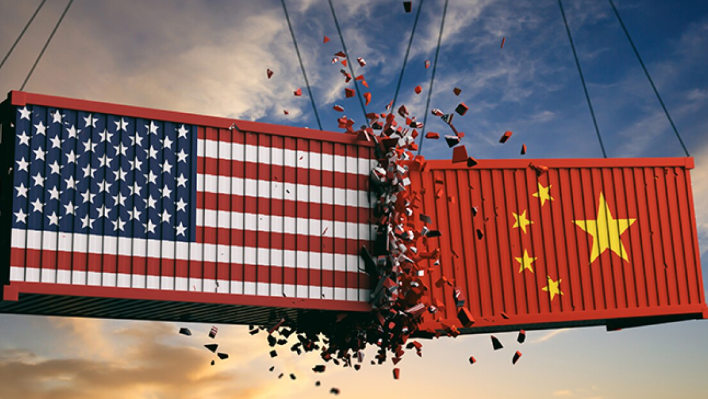
BLOG
China's Agricultural Trade Friction With The U.S. Presents Opportunities For Other Exporters

The first week of February 2025 was eventful for global agriculture. Following U.S. President Donald Trump's announcement of further tariffs on China, China retaliated.
On 4 March, China announced retaliatory tariffs on U.S. agricultural products, imposing a 10% tariff on sorghum, soybeans, pork, beef, aquatic produce, fruits, vegetables, and dairy products, alongside a 15% tariff on chicken, wheat, corn, and cotton.
During President
Trump's first term, when China imposed retaliatory tariffs targeting
agriculture, U.S. farmers were among the most affected due to the significance
of China in their exports. This time around, it will be no different.
One would even
argue that China is now more prepared than in the past, as it has been building
its domestic agricultural production for the past few years and switchingto new suppliers of vital farm products in South
and Latin America.
The chart below clearly illustrates what is happening with China's agricultural imports. What is clear now is that South America, like in 2018, may be among the winners as China searches for new sources of agricultural products.
The ASEAN countries
and the Black Sea region are also among the primary beneficiaries of these
changes in agricultural trade shifts.
With all the
progress China has made in boosting its agricultural produce, it remains a
major importer. In 2023, China was a leading agricultural importer, accounting
for 11% of global farm imports, totalling over US$200 billion, as the chart
above shows.
The top
agricultural products China imports from the world market include soybeans,
beef, various fruits, maize, wheat, rapeseed, palm oil, poultry meat, and
sorghum, amongst other products.
The major suppliers
of agricultural products to China are Brazil, the U.S., Australia, Thailand,
Vietnam, New Zealand, Indonesia, Canada, France, Argentina, Chile, Russia, and
Malaysia, amongst others.
South Africa is the
only African country in China's top 30 agricultural suppliers, which ranked 28
in 2023. Still, South Africa remains a negligible player in the Chinese
agricultural market, accounting for a mere 0.4% (US$979 million) of China's
agricultural imports of US$218 billion in 2023.
Sudan and Zimbabwe
are other African agricultural suppliers to China, ranked 33 and 34,
respectively.
Are there any opportunities for
South Africa during this disruptive time?
There certainly is
an opportunity. Even without China's clashes with the U.S., South Africa had a
chance and was willing to expand its access to the Chinese market.
South Africa's
significant challenges in the Chinese markets are higher import tariffs and
phytosanitary barriers for various products.
The higher tariffs
make South African farm products less competitive than Australia and Chile,
which access the Chinese market for duty-free products.
Given the reality
of clashes between China and the U.S. and China's effortsto diversify its agricultural suppliers, it is key that
the South African message in engagements with the Chinese authorities is
more firm and persuasive in promoting agricultural exports.
South Africa has an
agricultural surplus yearly and has maintained a trade surplus for over a
decade. In 2024, South Africa's agricultural exports amounted to a record
US$13.7 billion.
Indeed, this is far
from the staggering US$218 billion that China spends each year on importing
agricultural products from around the globe.
China is already
one of South Africa's major agricultural markets for fruits, wine, red meat,
nuts, maize, soybeans, and wool.
However, there is
room for more ambitious agricultural export efforts. Importantly, these
products would be even more competitive if there were zero duties in accessing
the Chinese market.
Ultimately, the
South African agricultural sector—organized agriculture and
researchers—consistently points out the need to lower import tariffs in China
and remove phytosanitary constraints on various products.
The South African
government must build on this momentum and message in its engagements with
Chinese authorities.
At a time when
South Africa's export-oriented agricultural sector faces some uncertainty in
some of its markets, mainly the U.S., it may be appropriate to argue for
greater access to China to diversify our agricultural exports and help China
diversify its sources.
Still, in
engagements with China, South Africa should maintain an open-minded posture
with other regions that are key markets. For example, South Africa must
consistently work to retain the duty-free access we enjoy in the U.S. market
and other key export markets in the African continent, EU, Middle East, Asia,
and other regions.
Our engagements
with China are primarily for diversification, not replacement of the existing
export markets.
- Wandile Sihlobo is chief economist at the Agricultural Business Chamber of SA and author of 'A Country of Two Agricultures'.

0 COMMENTS
LEAVE A COMMENT